








the staff
editor-in-chief holly funk editor@carillonregina.com
executive director vacant business@carillonregina.com
production manager shae sackman production@carillonregina.com
communications amin malakootikhah comms@carillonregina.com
web + advertising manager jaedyn whittal web@carillonregina.com
graphics editor lee lim graphics@carillonregina.com
copy editor emilie wren copyeditor@carillonregina.com
news editor allister white news@carillonregina.com
a&c editor mikayla tallon arts@carillonregina.com
s&h editor kimberley kaufman sports@carillonregina.com
op-ed editor hammad ali op-ed@carillonregina.com
distribution manager amin malakootikhah distribution@carillonregina.com
staff writer victoria baht
staff writer nazeemah noorally
staff writer maren savarese knopf
news writer shivangi sharma
a&c writer will bright s&h writer pall agarwal
contributors tom abramovic, william bessai-saul, parth pathak
board of directors holly funk, tayef ahmed, muhammad zuhruf muhammad zarooq, mohammad akib hossain, and mikayla tallon


the paper
227 Riddell Centre @ the University of Regina 3737 Wascana Parkway, Regina, SK, Canada S4S 0A2 www.carillonregina.com | (306) 586 8867
Printed by Star Press Inc, Wainwright, AB
The Carillon welcomes contributions.
Opinions expressed in the pages of the Carillon are entirely those of the author, and do not necessarily reflect those of The Carillon Newspaper Inc. Opinions expressed in advertisements appearing in the Carillon are those of the advertisers, and not necessarily of The Carillon Newspaper Inc. or its staff.
The Carillon is published no less than 11 times each semester during the fall and winter semesters and periodically throughout the summer. The Carillon is published by the Carillon Newspaper Inc., a non-profit organization.
land acknowledgement
The Carillon is written on Treaty 4 territory. As such, staff recognize that we are living, working, and telling stories on and of Indigenous lands. We recognize that we are on the traditional homelands of the Cree, Saulteaux, Nakota, Lakota, and Dakota peoples, along with the homeland of the Métis nation. The Carillon understands that it is pointless to acknowledge the land on which we work without demonstrating our commitment to telling stories and prioritizing voices that further the return of this land to its sacred place. the manifesto
In keeping with our reckless, devil-may-care image, our office has absolutely no concrete information on the Carillon’s formative years readily available. What follows is the story that’s been passed down from editor to editor for over sixty years.
In the late 1950s, the University of Regina planned the construction of several new buildings on the campus grounds. One of these proposed buildlings was a belltower on the academic green. If you look out on the academic green today, the first thing you’ll notice is that it has absolutely nothing resembling a belltower.
The University never got a belltower, but what it did get was the Carillon, a newspaper that serves as a symbolic bell tower on campus, a loud and clear voice belonging to each and every student. the people’s friend; the tyrant’s foe


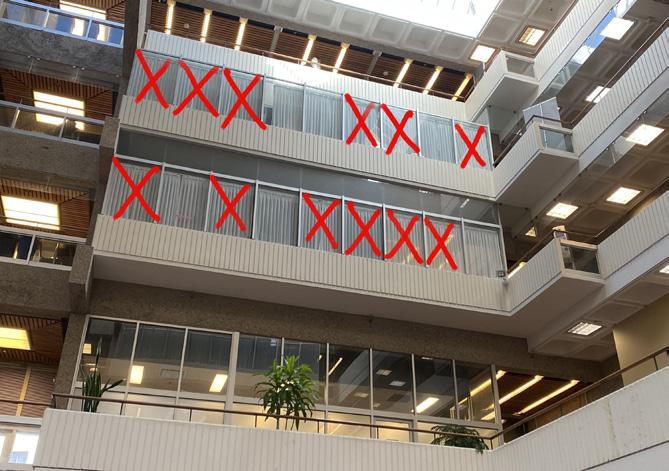







maren savarese knopf staff writer
Recently there have been several major climate events across Canada. On the east coast, areas in New Brunswick reported upwards of 190 mm of rainfall within 24 hours.
The town of Sussex, located in the Kennebecasis Valley, was the hardest hit. The town activated its highest level of community disaster planning and recommended people avoid travel in the area due to flooded or washedout roadways. Trout Creek, the waterway running through Sussex, can typically handle a water rise of 1.7 meters. The downpour saw water levels rise to 2.5 meters, nearly doubling the capacity of Trout Creek.
On February 29 the town of Sussex released a media post stating: “We have evacuated 12 people as of 4:00 [a.m.]. Most impacted residents are requested to shelter in place.” This number of evacuations increased to 14 households as conditions worsened.
“The reality is, times are changing,” said Public Safety Minister Kris Austin. “We have
to mitigate and we have to work towards what our homes will look like around some of these areas — or should we even be building around some of these areas?”
The town of Sussex is familiar with this scale of flood.
Ten years ago in 2014, a similar weather event occurred causing major washout, water damage, and flooding. After the 2014 flood, the town applied for $15 million from the federal government for an estimated $38 million project to mitigate and address climate disaster.
Since applying, the process has stalled. When a spokesperson from Infrastructure Canada responded to CBC’s request for an update on the funding application, the department declined to comment or give details, stating “partner confidentiality.”
Scott Hatcher, the town’s chief administrative officer warns that the future of Sussex is at stake. “Without the solution, without the funding, without the mitigation plan — we’re going to die a slow and painful death over the next couple of decades,” Hatcher stated.
Heavy downpours have been impacting the area for years.
After historic flooding in 2014,
2019, 2020, 2022, and most recently in 2024, Hatcher stresses that climate change “is real, it’s here — and unfortunately, our residents are living it.”
Across the Atlantic region,
mers on record.
The Government of Canada says, “We are already seeing the impacts of the climate crisis across the globe with more severe and more frequent wildfires,
vesting in climate-resilient cities is a necessity. This will help cities become resilient to a wider range of climate disasters, and research finds that these incentives ought also be partnered with efforts to
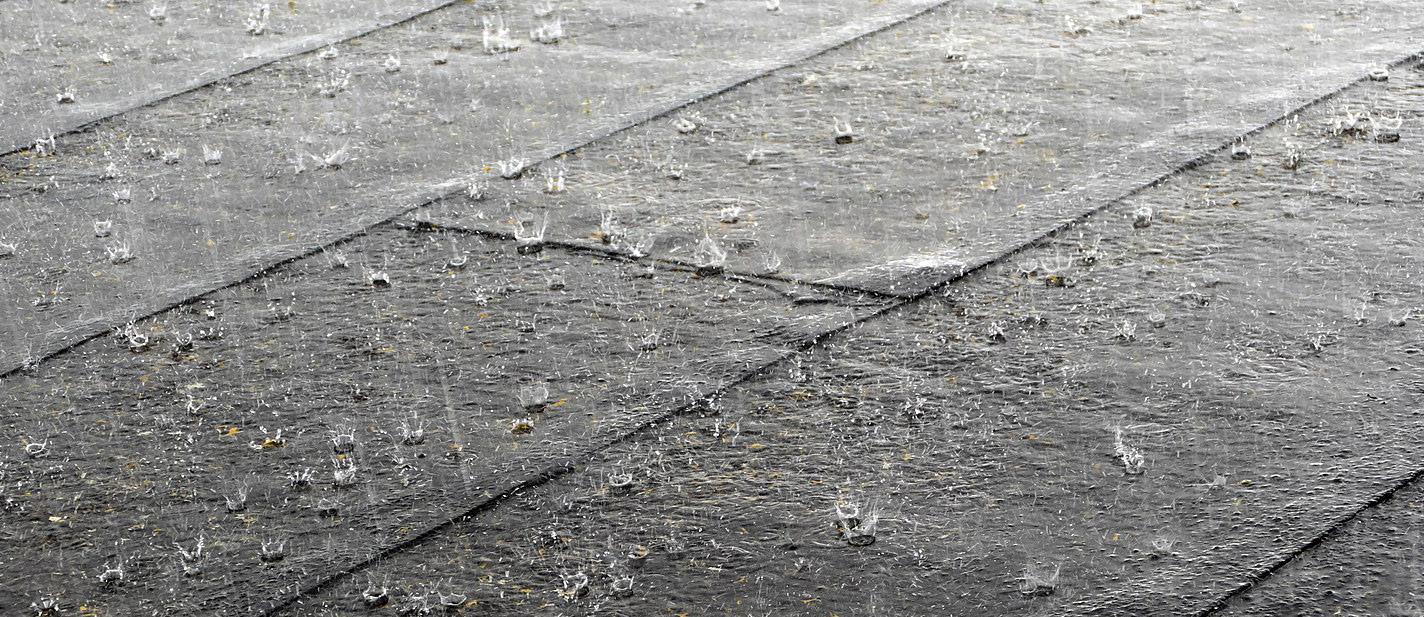

the summer of 2023 amounted to a record amount of summer rainfall. According to Environment and Climate Change Canada, results show that Yarmouth, Greenwood, Kentville and Sydney in Nova Scotia, along with Saint John and Fredericton in New Brunswick and Charlottetown in PEI recorded their wettest sum-
floods and droughts in many parts of the world. It affects our economy, our infrastructure, our health, and overall well-being too.”
While the Canadian government does offer initiatives like Canada Greener Homes, carbon rebate, and zero-emission vehicle incentives – all claiming to address climate change— in-
promote urban development. We are in the midst of rapid, global climate change. The decisions made going forward are critical, especially for communities in the coastal regions of Canada where the impacts are exacerbated.
Faculty of Science celebration initially excluded those observing Ramadan, now rescheduled
On Mar 5, Dr. Tanya E. S. Dahms, the Associate Dean of Research in the Faculty of Science, sent an email to graduate students reminding them that on Tuesday, Mar 12, a celebration for graduate students was set to take place on the third floor of the Research and Innovation Centre.
The celebration, according to Dr. Dahms, was set to include “snacks, beverages, and great conversation.” The celebration is meant to honour and celebrate all graduate students involved in research. The event, initially scheduled on Mar 12, would have been during Ramadan fasting for Muslim students.
People of Muslim faith observe Ramadan as a holy month. According to Muslim faith, more than 1,400 years ago during Ramadan, the first verses of the Quran, the central text in Islamic faith, were delivered. Islam’s lunar calendar determines the dates of Ramadan and, according to Al Jazeera, most Muslim-majority countries adjunct their dates for the holy month based on testimonials from moon sighters.
Throughout Ramadan, observing Muslims fast from sunrise to sunset. This is done to, as Al Jazeera reports, “achieve greater ‘taqwa,’ or consciousness of God.” The fast can include abstaining from eating, drinking, smoking, and sexual relations
among other things. The networking event that “celebrates” graduate students in the Faculty of Science would be primarily inaccessible to Muslim students fasting to observe Ramadan, thus excluding a large number of both
chosen not to attend. “If you are fasting, it is completely understandable if you choose not to join,” Dahms wrote. “I am sorry to exclude you.”
Dahms also cited the planning of the celebration which
2025 will likely begin between Feb 28-Mar 1, and conclude on either March 30 or 31. Aljazeera has a 33-year Ramadan cycle publicly available.
In the Mar 6 email, Dahms made no mention of rescheduling


If the Associate Dean of Research can’t keep track of dates, where’s the hope for mere mortals?
students and faculty from it.
One day after Dr. Dahms’ initial email on Mar 6, a follow-up email was sent by Dahms. Addressed again to graduate students in the faculty of Science, the email pre-emptively ‘forgave’ Muslim students who may have
occurred during the fall as the reason for the celebration being scheduled during Ramadan.
The dates for Ramadan, while subject to slight variation depending on the Islamic lunar calanar, are known well in advance. For example, Ramadan
the event to consider Muslim students. Dahms simply stated that the department would “be more mindful of timing.”
On Mar 7, Dr. Dahms sent another email addressed to graduate students which informed them that the celebration had
been rescheduled for April 15. The event is now schedules shortly after Eid al-Fitr. Dahms explained in the email that “it did not sit well” with her when she realized that she had scheduled a celebration with food and drink during the Ramadan fast.
The University of Regina (U of R) observes Good Friday as an institution – most offices are closed, and no classes are held on the day. While it’s nearly impossible to accidentally schedule an event on Good Friday because the religious holiday is also observed as a federal statutory holiday in Canada, events such as the one initially scheduled for Mar 12 may fall during Ramadan if university staff are not mindful of religions outside of those which have impacted Canada’s holidays. Events on campus taking place in the near future that may be of interest include the University of Regina Muslim Student Association’s (URMSA) “Lectures and Iftar” event titled “Miracles of the Quran” on Mar 16 from 4-6:40p.m.. RSVP is required, but tickets are offered at no cost and can be downloaded from the URMSA’s website: urmsa.org/
allister white news editor
“We’ll try our best, okay?” states Keshen on projected 4 per cent tuition raise
shivangi sharma news writer
Disclaimer: The Carillon is pledged to avoid conflicts of interest or the appearance of conflicts of interest wherever and whenever possible. To uphold these values, editor-in-chief Holly Funk was not involved with any part of the writing, editing, or producing of coverage on this topic given their personal involvement in these matters.
A town hall with university executives, organized by the Regina Public Interest Research Group (RPIRG), was held on Tuesday, Mar 5. The event which lasted for an hour and was held at the Multi-Purpose Room (MPR) at the Riddell Centre. The event provided an open platform for all University of Regina (U of R) students to be able to be able to have a direct conversation with the University executives and ask questions and raise concerns.
“Our mandate is to do advocacy in and outside of the campus. And in the past, we had done so by coordinating with different groups and advocacy procedures in terms of, you know, more wages, less tuition fees,” explained Tayef Ahmed, the Executive Director of RPIRG. “The budget…it affects and impacts all the students every single time. It impacts their education, it impacts the quality of education. But students aren’t in those discussions and then they don’t have any idea what’s going on,” Ahmed continued.
While there is still representation in the Board of Governers, Ahmed understands that there is missing context for students, and thaat the representative “probably is not communicating with the
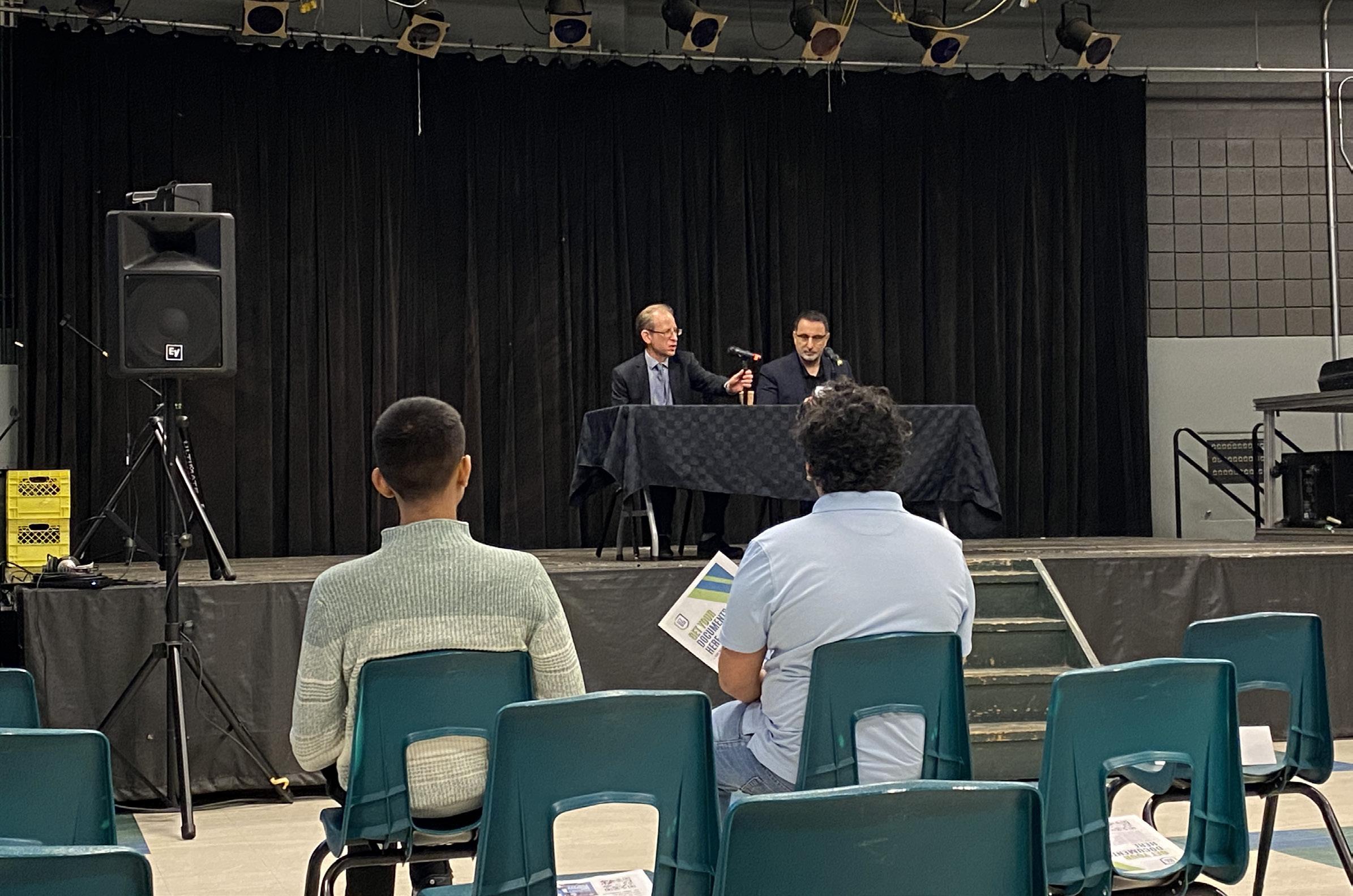
“Do or do not, there is no ‘try’” Yoda[llister]
utives. Due to limited amount of time available, students were also encouraged to send their questions to RPIRG in advance. The event began at 1:30 in the afternoon of March 5 and lasted for an hour. The first thirty minutes were set aside for pre-designed questions and the students got the opportunity to ask on-the-spot questions for the last thirty minutes of the meeting.
The university executives were represented by Dr. Jeff Keshen, President and Vice Chancellor U of R, who answered most of the questions. The presence of Dr. Alec Couros, Director of the
engaging about things that they are concerned about, things that they would like to address in the university context,” said Keshen.
Although the event granted an opportunity to have a conversation with the university executives, student turnout was not significant. “It was not a super organized thing. We actually left it to the executive team to decide the day and time and the length of the meeting that would work for them. Unfortunately we were not able to take student availability into account this time,” explained Ahmed when discussing attendance.
number of study permits by the federal government and its effect on university’s revenue which depends a great deal on international student enrolment were also bought up. A full transcript of the answers provided by the executives can by accessed by sending a request to info@rpirg.org.
One of the predetermined questions raised concerns about recruiting agencies in different countries which the U of R partners with for recruiting international students. These agencies reportedly lie to international students about jobs and other opportunities to exploit them.
“While the university claims the government has frozen funding, the Minister for Advanced Education claimed in May 2023 that the university did not ask for additional funding regardless that year.”
rest of the students about what’s been going on.” This disconnect, according to Ahmed, was the primary motivator for the town hall. “I thought it would be a great opportunity for individuals to come and then answer these questions directly in public,” he explained.
U of R students were informed about the event via emails sent out by RPIRG and Student Affairs approximately a week before the event. The email mentioned that the students will have the opportunity to ask questions directly from the university exec-
Centre for Teaching and Learning; Dianne Ford, Vice President (Administration); Dr. Isabelle Dostaler, Provost and Vice President (Academic); Glenys Sylvestre, Chief Governance Officer; John D. Smith, Associate Vice President (Students Affairs); and Dr. Christopher Yost, Vice President (Research) was also noted.
Holly Funk, Editor-in-Chief at the Carillon acted as moderator for the event.
“I’m very happy to be here for students and others who are interested in asking questions and
Questions revolved largely around student welfare in including concerns about rising tuition fees, cost of living, food insecurity, and the university’s role in maintaining student satisfaction and the quality of the services they offer.
Surveys for assessing student satisfaction were mentioned by executives. How many students actively and honestly participate in these surveys were not taken into account.
Questions regarding the recently announced cap on the
Shivangi Sharma
“…we have very clear contractual obligations upon our recruiters any of them that misrepresent are not used anymore by our institution. They have to take training through our UR International. Much of the recruiting that’s done by the [U of R] is not done by third parties. It’sdone by UR International…We have a team at UR International. So whereas we deal with some agents we ensure that the agents that we deal with are highly ethical if they misrepresent in any way whatsoever, we end the contractual rela-
tionship with them,” stated Keshen in response to the question.
In light of predictions made by the proposed 2024-2025 budget that the tuition might rise again by another 4 per cent in the next academic year, questions regarding what alternative methods are being looked into to deal with budgetary issue other than a raise in tuition fees were raised.
In response to these concerns Keshen said, “I think you deserve a very honest answer. When the government came forward with the four-year agreement that we had, they said that they were going to freeze the amount that we that we were going to get over those four years, but we could raise tuition up to 4 per cent.” While the university claims the government has frozen funding, the Minister for Advanced Education claimed in May 2023 that the university did not ask for additional funding regardless that year.
“We have a responsibility to our board to balance our budget each year. And we also have to deal with rising cost,” said Keshen. ”We’re trying our best to put more money into scholarships… You’re trying to make us aware of the fact that you are really having a tough time. We’ll try our best okay?”
A number of promises and reassurances came from the university’s end regarding student welfare. “Students are interested in having these conversations… Future events like these are certainly in the picture so that the students can also follow-up on the promises that were made by the university executives in this meeting,” explained Ahmed.
shivangi sharma & allister white news writer & news editor
In 2023 a notable reduction in the number of academic positions was recognizable nearly across the board at the University of Regina (U of R) and its federated colleges. Information about the reduction was released to the public in the U of R’s 2023 academic workforce report.
In May 2023, CBC reported that the U of R was undergoing “workforce adjustments,” including layoffs. The U of R also offered many early retirement incentives and eliminated vacant positions. This news came to light as Saskatchewan’s Minister for Advanced Education, Gordon Wyant, claimed that “The U of R didn’t ask for any additional funding.”
All in all, the Faculty of Arts suffered the highest cut in academic positions. The Faculty of Science saw a small increase in the number of positions available, and was least affected by cuts. In short, academic positions are being slashed while tuition rises progressively. The questioned raised is this: why are students paying more and receiving less at the cost of both ourselves and our faculty members?
Academic appointments made by the U of R are based on the collective agreement between the U of R and the University
of Regina Faculty Association (URFA) which represents all U of R academic staff members.
The 2023 academic workforce report showed a 2 per cent decrease in academic appointments for 2023. This decrease was measured by combining figures from the U of R, First Nations University, Campion College, and Luther College. In total, 497 academic positions were appointed in 2023 – the lowest number of appointments made since 2020. Statistics inlcuded with the report also show that the number of academic positions have been declining steadily since 2021.
This dip in the number of positions has so far only affected academic staff. The number of positions for non-academic staff has remained approximately the same for the years 2021-2022 and 2022-2023, as per U of R workforce demographic reports.
In 2009, Dan Clawson published a paper titled “Tenure and the Future of the University,” examining cuts like those at the U of R and their impacts on research institutions. Clawson explained, “The fundamental rationale for the tenure system has been to promote the long-term development of new ideas and to challenge students’ thinking,” and that “tenure is needed to provice faculty the freedom, […] to challenge conventional wisdom.” As a result of this link between tenure positions and student learning, the quality
of education is likely to plummet alongside cuts to positions.
The move away from tenured positions typically means an increase in part-time positions, with no little to no time or funding for research. In 2019, a study authored by Chris Hubbard-Jackson found that part-time faculty experienced burnout at higher rates than tenured faculty. “If part-time faculty experience burnout a few times a month,” Hubbard-Jackson explained, “there is a stronger likelihood of the student learning environment and students being negatively affected.”
While burnout is often at the forefront of students’ concerns, many do not consider the impact of academic work on part-time faculty who, as Hubbard-Jackson explains, experience burnout at equally concerning rates.
Why the burnout? Hubbard-Jackson states that nearly 80 per cent of the part-time faculty who participated in his study indicated part-time faculty working conditions such as “low pay, a lack of benefits, not having an office space, a lack of job security, teaching a large number of courses each semester, a lack of institutional support, being undervalued, grading, odd work hours, and limited student interaction outside of class” as impacting factors.
URFA’s sessional advocacy committee explains that, at the U of R and its federated colleges,
WEDNESDAY
– 9:30 am (spoken-word)
stories from around
Science Unscripted 9:30 – 10 am (spoken-word) Chinese Connection 10 – 11 am (spoken-word) Get Chatty With Kathy 11 – 11:30 am (spoken-word) A mixed bag of topics
Muzyka Ukraine 11:30 am – 12:30 pm WINGS 12:30 – 1 pm
THURSDAY
sessional staff only qualify for employment insurance under certain circumstances, though “most sessionals who teach four courses over a two-semester period will be eligible to receive a weekly benefit.”
Courses can be cancelled by
to any of the stipend.
While sessionals experience incredibly high rates of burnout, often as a result of the terms of their employment, they do not have access to a health and wellness expense account. Tenured and tenure-track professors both
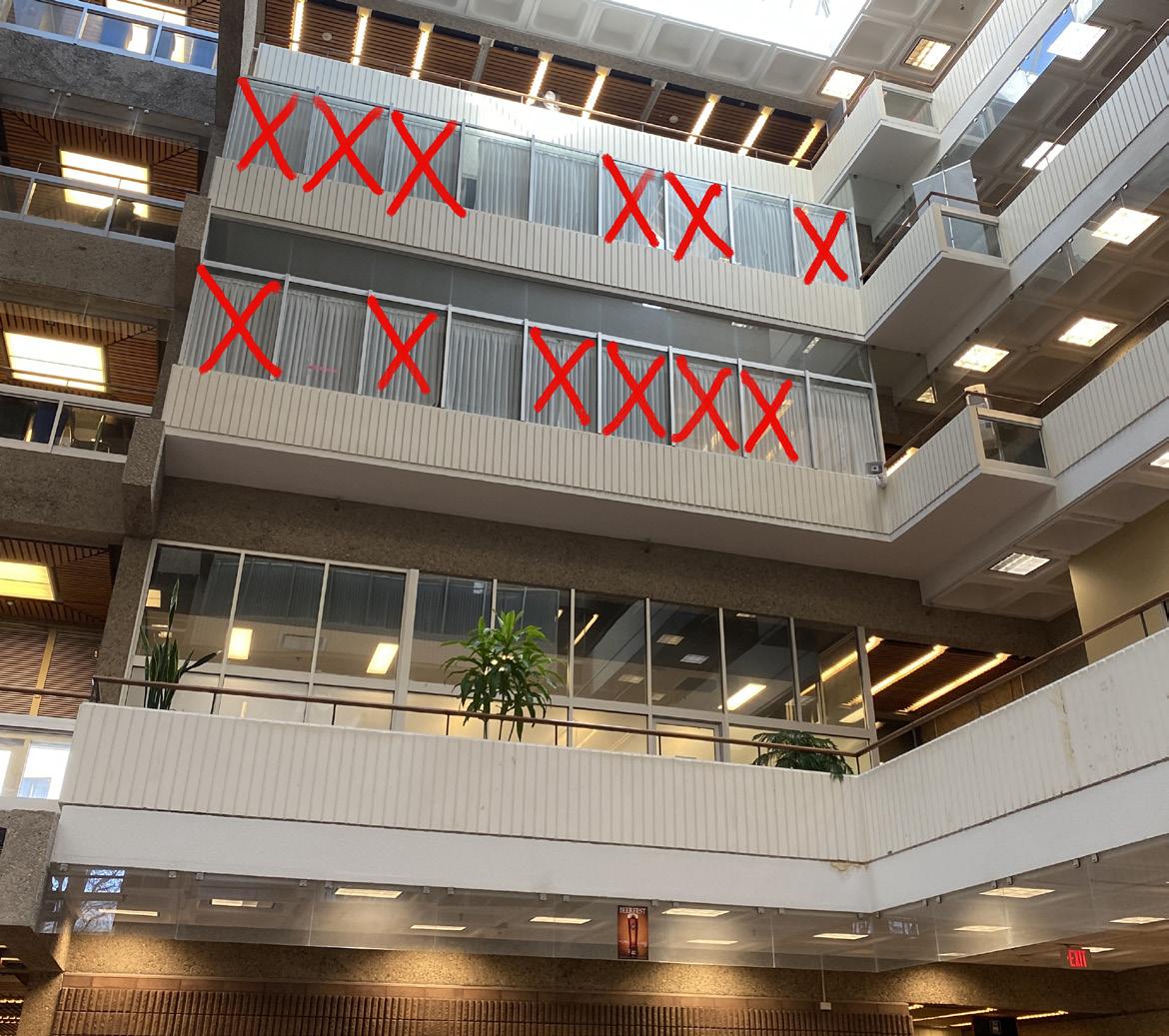

the university prior to their start dates, and sessional lecturers are compensated one-quarter of the course stipend. Even this stipend is conditional; it’s only applicable if the course is cancelled less than one month before it is scheduled to begin. Any time earlier than that, the sessional is not entitled
FRIDAY
SATURDAY
have access to such accounts. As tenure and tenure-track positions are cut, so are the benefits and securities that go along with such positions.
Alongside them? Opportunity for part-time faculty and those with dreams of working in academia.
Multi-level marketing schemes, the lot of ‘em!
will bright a&c writer
Seint was founded in 2013 by Cara Brook, and markets itself as a makeup company made for women to do their makeup easier, to simplify the makeup routine. According to the Seint website, Brook had the idea when she was 11-years-old, creating a science fair project about it.
When Brook got older, she became a beauty blogger under the title “Maskcara,” which might be a brand that you’ve heard of. Brook seems to believe that the makeup industry is solely about shilling out products to insecure women who feel like they need more and more to meet society’s standard.
Brook wanted to make products that were simple and celebrated everyone’s beauty. According to Seint, she’s the first person to ever do that.
Despite claiming that her entire brand and purpose is to enhance and embrace the beauty women already have, Brook herself has gotten several plastic surgery procedures. There is absolutely nothing wrong with that, but it gives doubt to her products and her mission if even she doesn’t abide by it.
In 2020, the company officially changed their name from Maskcara to Seint. On their website, they say it’s because the name Seint is a better reflection of what they’re trying to accomplish with the company and the products. They compare make-up to saints, like in Catholicism. “Cultivating beauty is a sacred work; the work of saints.”
But, that’s not the only reason they changed the name.
When you look back at their 2020 rebrand, the only thing that really changed was names. All of the products stayed the same, the website stayed the same, only the company name and the name of certain products were changed.
It raises a few red flags. Why would a successful company known under one name suddenly up and change their entire brand overnight?
Because there was a lawsuit.
In 2020, a woman named Kirsten Tyrrel sued Maskcara Industries. These days Tyrrel is a business consultant, but before
that she was an Artist for Maskcara.
By Artist, I mean she was a distributor for the multi-level marketing (MLM) side of Maskcara.
In 2017, the brand announced their Artist Program, which is really just people joining the MLM scheme. Artists pay a monthly fee to have their own subpage in the website for people to buy from.
Artists are sent a $139 Artist Kit (pre-assembled) and are expected to start hawking Seint makeup to friends and family so they can make commission off of their purchases, while the person the artist signed up under – the upline – gets money too.
People on Reddit who claim to have been a part of Seint/ Maskcara in the past say that Tyrrel and Brook used to be very close when Tyrrel was still a part of it.
The lawsuit states that Tyrell had her commissions denied and she was suspended under wrongful pretenses. Maskcara responded that Tyrell had been buying ranks which Tyrell denied. According to a Medium article about MLMs, “Rank buying is a simple idea that you and your director will do whatever you need to do, pay whatever you need to pay, to move you up the ladder or keep you active in the MLM.”
The author of that article says she and her director, or upline, would give her some orders that weren’t her clients’, the upline would order from her director, and the author would order products for herself. The point of rank buying is just to make sure the monthly quota is hit.
There isn’t too much more out there publicly about the lawsuit. Online rumors claim that Tyrrel’s rank buying was done using fake names and claiming they were part of her downline (artists that work under her or on her team) while using credit cards to buy products under those names. Since she was doing that, she got bonuses and so did others in her downline.
Seint’s big claim to fame is their “demi” method, which is just spot correcting and not the “revolutionary technique” they claim it is. Their other big thing is the palettes that have everything you need for one make-up rou-
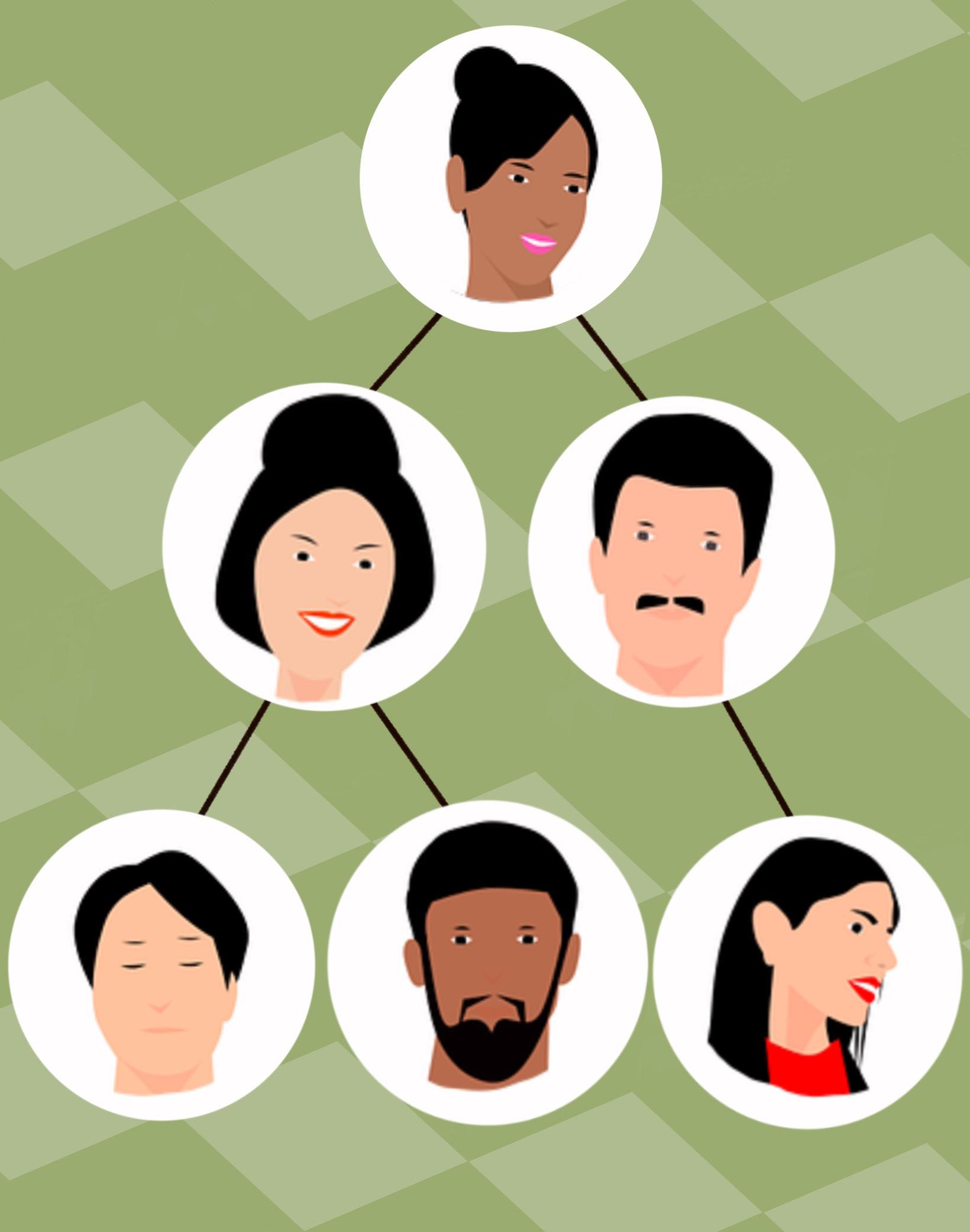
tine. Their palette builder lets you add highlighter, contour, blush, setting powder, bronzer, eyeshadow, eyeliner, lip liner, and more into one palette.
The largest size IIID Palette 18 with 18 tins, the size you need to include at least one of everything, completely full costs $500. So, yes, you can live Brook’s dream and have a simple, easy, all-in-one container beauty routine, but it’ll cost you $500.
I took a look at a Seint “Artist” sales page from an Artist who had been in the MLM for less than three months. The cheapest product was $54 (on sale) for three highlighters. The most expensive product was $400 for one
of the largest collections with two brushes, three highlighters, one contour, one bronzer, three lipcheek combos, one illuminator, eyeliner, five eyeshadows, and the palette itself.
Seint is also an MLM that discloses their income and the income of their artists.
In the United States, there are 13,069 artists in the Artist I tier as of 2022, but only 6,434 artists are actually active. The highest annual earner in the group made $874 a year. The jump to the Artist II level money-wise is big. 5,271 active artists, and the top earner made $62,781. The jump to Artist III is even bigger. Only 44 artists in this rank are ac-
“ So, what’s left to say about Seint Beauty? It’s extremely overpriced.”
Bright
tive, and the highest earner made $943,508 in 2022.
The highest rank is Artist X, of which there is only one artist who reportedly isn’t even active, yet made $2.3 million dollars in 2022 and it took them 47 months of growth to make that much.
The total average earnings were $2,162.85. In Canada, the highest ranked are only in Artist VII and make an average of $162,166 a year, and the highest earner made $361,818.
So, what’s left to say about Seint Beauty?
It’s extremely overpriced. The cheapest make-up products are tiny, single eyeshadow tins for $20, a makeup sponge for the same price, or a small pack of paper to blot out oil and sweat for $16. You’ll also probably break out since most people online, who aren’t part of the MLM claiming they tried it, say that they got some serious acne after using it.
If you try to join Seint as an Artist, you’ll probably make less than $1,000 a year, which doesn’t include the cost of getting your Artist Kit, keeping your spot on their website, and meeting your quotas.
Have you run out of things to watch? Here’s a new one!
ships have been shaped, the way they live their lives because of the past.
Are you the type of person to promise that you’ll watch that show your friend recommends but you never do? Or are you the type of person to never start watching anything new, always rewatching the things you know you love?
Avoiding anything that’s not already finished?
Me too.
But, after a solid two years of only Hell’s Kitchen, I branched out. And I found something new that I haven’t been able to move on from.
Yellowjackets
The story follows a high school girls’ soccer team from New Jersey. On their way to the National Championship, their plane crashes. The team ends up stranded in the wilderness, forced to do whatever they can to survive.
You might be asking yourself, “But Will, how is that any different from The Wilds or Lost?” And that’s a great question!
The answer is my favorite part about Yellowjackets: consequences.
The show flips between the girls as teenagers in the wilderness and them as adults, living with the repercussions of their actions and everything they were forced to do to survive. The way their relation-
The way they can never truly escape their past.
The main character of the
Typically when TV shows present us with leader characters – think Rick Grimes or Captain America – no matter what happens, they lead. They lead their people out of the darkness.
childhood. She is the one who does what needs to be done for them to survive. As an adult, it almost feels like she’s haunted by the wilderness.
Patterns appear, taking ac-

first season (of which there are currently two with a third on its way for 2025) is arguably Jackie Taylor. Jackie is simply doomed by the narrative from the first episode. She’s the team captain. That pressure rests on her shoulders and becomes tenfold when they crash.
That’s not Jackie. Jackie struggles deeply with the wilderness, she doesn’t adapt like the others do. It creates this imbalance that is beautiful tension for the viewer.
Jackie is the other side of Shauna Shipman’s coin. Shauna has been Jackie’s best friend since
tions she would’ve done as a teenager, she seems drawn to them. It creates a compelling character that you want to root for, no matter the bad things she does.
My personal favorite character is Lottie Matthews. She has diagnosed schizophrenia, which becomes a bit of a problem being
crashed in the wilderness for several months once she runs out of her meds.
Lottie creates this back and forth of the wilderness as its own entity within the show. She sees the wilderness as a living thing through visions and it becomes this thing that holds power over them. The question is always held over the girls, “how much of this is the wilderness as supernatural and how much of it is trauma?”
How can you go from a battle to survive every moment of every day to simply home? How do you leave the wilderness, this living, wild, all-consuming thing, to streets, sidewalks, shops? How can you exist through all of that and be expected to be who you used to be?
Those are the questions Yellowjackets forces you to ask yourself. Who do you become without the things that happened to you? Who are you if not trauma reincarnated? When the wilderness is the very earth of you, what do you become without it?
If you want a show that forces you to confront yourself in a way that feels disjointed, out of your control, something you can’t control, like the wilderness, Yellowjackets is for you.
Or if you’re simply an English major like me who loves to pour over the details, Yellowjackets is for you.
If you’ve been sucked into a rut, find things that help you appreciate beauty
One of my favourite causes of joy throughout my early 20s was going to live music shows, though with 2020’s sudden COVID-19 onset, this pastime of mine ground to a halt.
I used to get out to a couple dozen shows a year at The Exchange, The Artesian, and The Mercury among other venues, but I think I only really made it to three shows between January 2020 and December 2023. I’m now in my late 20s and am just realizing how much missing out on shows was impacting me, because I’m getting to see how much more readily I appreciate beauty when I do go.
Standing in a crowd of total strangers and watching someone’s face light up as the band starts to play the first few chords of their favourite song. Noticing people hold their loved ones extra close during sweet songs, tears flowing down cheeks during heavy-hitters, or experiencing absolute elation as they lose all self-consciousness while dancing.
In January, I decided I wanted to go see a show on my birthday, and after some peeking around I discovered that Halle Ponton, Bears in Hazenmore, and Marissa Burwell were slotted to play at The Exchange that exact night. I’d never heard anything from any of these artists before-
hand but decided, what the heck, if it winds up being a great show then I’ll have some good stories and if it winds up being a terrible show, I’ll still have some good stories.
Ponton’s range in vocal tone immediately put a grin on my face, and the bass player funk-slapping through a grungy country song
Another show I went to at The Exchange this January featured Fake Shark, as well as Hotel Mira who was headlining a tour for their first time. I’d only heard one of Hotel Mira’s songs beforehand and none of Fake Shark’s, but I kept my attitude from the show earlier in January: let’s go and just see how things go.
in everything from costume to timing to intensity and general demeanor, Maher stuck out like a sore thumb.
Once Hotel Mira started playing, however, my attitude took a 180-degree turn as I was enraptured by lead singer Charlie Kerr. His voice live was better than any recording I’ve heard of


had me smiling for days after (somehow it just worked). Bears in Hazenmore was another highlight with Dalton Lam’s brass accents being a particularly memorable favourite, while Marissa Burwell’s honey-warm voice and Chris Dimas break-down-frowning as he drummed behind was a beautiful contrast.
Even though I went in with no expectations, Fake Shark was underwhelming. Specifically lead singer Kevin Maher who said no fewer than seven times throughout the set, “We’re your new favourite band: Fake Shark!”
I simply can’t agree. The band did a fantastic job and maintained good chemistry, but
him before or since, his magnetic charm and cheeky grins wooed the crowd from the start, and he never shied away from an opportunity to welcome those attending to participate (an inside joke for those who attended: fuck Taylor).
I enjoyed Hotel Mira so much that after the show I mentioned I’d be excited to see them
again anytime the opportunity came up, and a delightful darling of a man who I went to the show with slyly mentioned that they’d be playing at Louis’ in Saskatoon the next night.
We ultimately decided to make the drive. Fake Shark was a bit more bearable (only four “We’re your new favourite band!” comments this time), and Hotel Mira maintained my excitement to such an extent I had their newest album on repeat for weeks afterward.
Attending live music again has helped to enhance my ability to appreciate beauty. Sometimes that beauty is watching someone dance with abandon, sometimes it’s a wondrous unity you feel belting out lyrics with everyone else in the crowd, and sometimes it’s pure admiration for the artists’ skills and creativity.
Long story short, I’ve learned that I feel more constant joy when in the habit of appreciation, so I’ll be continuing to make live music a priority in my life and I’d encourage you to do the same.
Even if you know none of the bands at a given show, you’ll come away with good stories. Hell, maybe you’ll even see me there.
If you’ve been asking yourself this question, wonder no more!
parth pathak contributor
In my previous company, I was introduced to a new board game: Crokinole. Its uncanny resemblance to Carrom, be it the board and lubricating powder or wax, coupled with elements of curling all put together on the table-top piqued my curiosity.
What followed was my thorough grasping of the knowledge needed to play, trying my hand at playing, and eventually having fun!
Originating from Canada in the early 19th century, its name is derived from the French word “croquignole’’ meaning “donut.” It can be played with two to four players. If there are more than two players, they would team up.
Simply put, players take turns flicking the discs into a highscore region while also trying to eliminate the opponent’s discs. This goes on until they run out of discs and the player with the highest amount of points wins. There are 12 discs for each player and each player or team has a distinct colour for their discs. Generally there are two coloured discs available – black and white. Additionally, other coloured discs could be ordered in.
In a broader sense, there are rules about how to flick or shoot.
Discs are to be shot only with a finger, without any finger guards. However, some players are allowed to use finger cues. While playing a shot, only the shooting hand alone can come into contact with the board or table. Players cannot intentionally move the board, table or chair in an attempt to gain an unfair advantage.
attributed to craftsman Eckhardt Wettlaufer from Perth County, Ontario. The overall playing surface diameter is 26 in., with the outer circle diameter being 24 in., the middle circle diameter being 16 in., the inner circle diameter being 8 in. and the ditch being, at a minimum, 2 in..
The 8 posts on the board are made of latex rubber, which
lands in the hollowed-out black dot in the center, the player gets 20 points. If the disc lands between the first circle and the center, the player receives 15 points. Next is the zone worth 10 points and eventually the 5 points outermost zone.
The line for the five points zone indicates the end of the shooting range within which the

Also, a shooting disc cannot be placed on the board until it is your turn. It has to be placed on the table or other playing platform outside the board. Typically, the size of discs are 32 mm in diameter and 10 mm in width.
Fun fact: the board design is
I know you know
allows the disc to bounce to lower scoring zones worth 10 or 5 points. These posts are called Crokinole Bumpers and are 3.6 cm tall and 1 cm wide.
For the rules, starting from the innermost circle, here are a few points to consider. If the disc
But did you know everything else in here?
Uno! A very popular card game, even though it can get super frustrating at times. Interestingly though, Uno is kind of controversial. What’s controversial about a card game, you ask? Well, the controversial thing about Uno is that ultimately there are many ways for people to play it.
Even though there are rules that come with the card game, every group of friends, household, or even classroom has a different way of playing Uno. With all the different versions of this beloved game and the endless different sets of house rules, there are countless versions of the game to play.
Official rules can be found on unorules.com. Now, some people might have gotten off-track over the years, and there are still quite a lot of rules for this easy to pick up game, but there are some key ones that sometimes get pushed to the side.
At the beginning of the game, all players start with seven cards in their hand. The point of the game, as many of you know, is to discard cards that match with the discard pile; whether this is achieved by matching the number, colour, or the symbol/action on the card doesn’t matter, it just has to match one of those.
To start the game, one card is flipped up from the draw pile and placed in the middle to start of
the discard pile. If the first card flipped from the draw pile is an action card, that action must be followed. The only time it won’t be followed is if it’s a Wild or Draw Four card, as those cards are to be put back in the deck
card the next player must draw two cards and forfeit their turn, meaning they do not play after they pick up. Also, with the Wild Draw Four Card, you can only play when you have no other alternative, meaning there are no
player is supposed to shoot their disc from. A player may only shoot from their shooting range, not anywhere else.
The Ditch is from where the player actually shoots. When shooting the disc, a player’s hand must not exceed the first circle
scoring line. All invalid discs, discs which are no longer playable, are also placed in the ditch. For example, a disc would be considered invalid if it were to fall off the board or if it doesn’t cross the five points zone. Note that a disc touching the line of a dividing circle is counted at the lower value.
Did you know there’s an annual tournament held for Crokinole that’s been going on since 1999? The World Crokinole Championship (WCC) happens every first Saturday of June in Tavistock, Ontario.
Newbie or playing for fun? You can still have a spot in WCC under the “Recreational” category! Aside from this category, they have: Competitive, Cue, Youth Intermediate and Juniors. All the specified game formats can be played in either Singles or Doubles.
It’s interesting to note that if a player were to win in a recreational division, they cannot compete in the recreational category for the 2 consecutive years following their win.
All their information from eligibility to scoring cards to elaborated tie-breaking rules are written in this website: worldcrokinole.com/thegame.html
Wi ll we see a University of Regina alumni in the Championship? Only time will tell.
one card at a time. Meaning, there are no stacking cards. You cannot put down a plus two with a plus two or a blue eight and a red eight.
Second, let’s chat about some of the rules that people
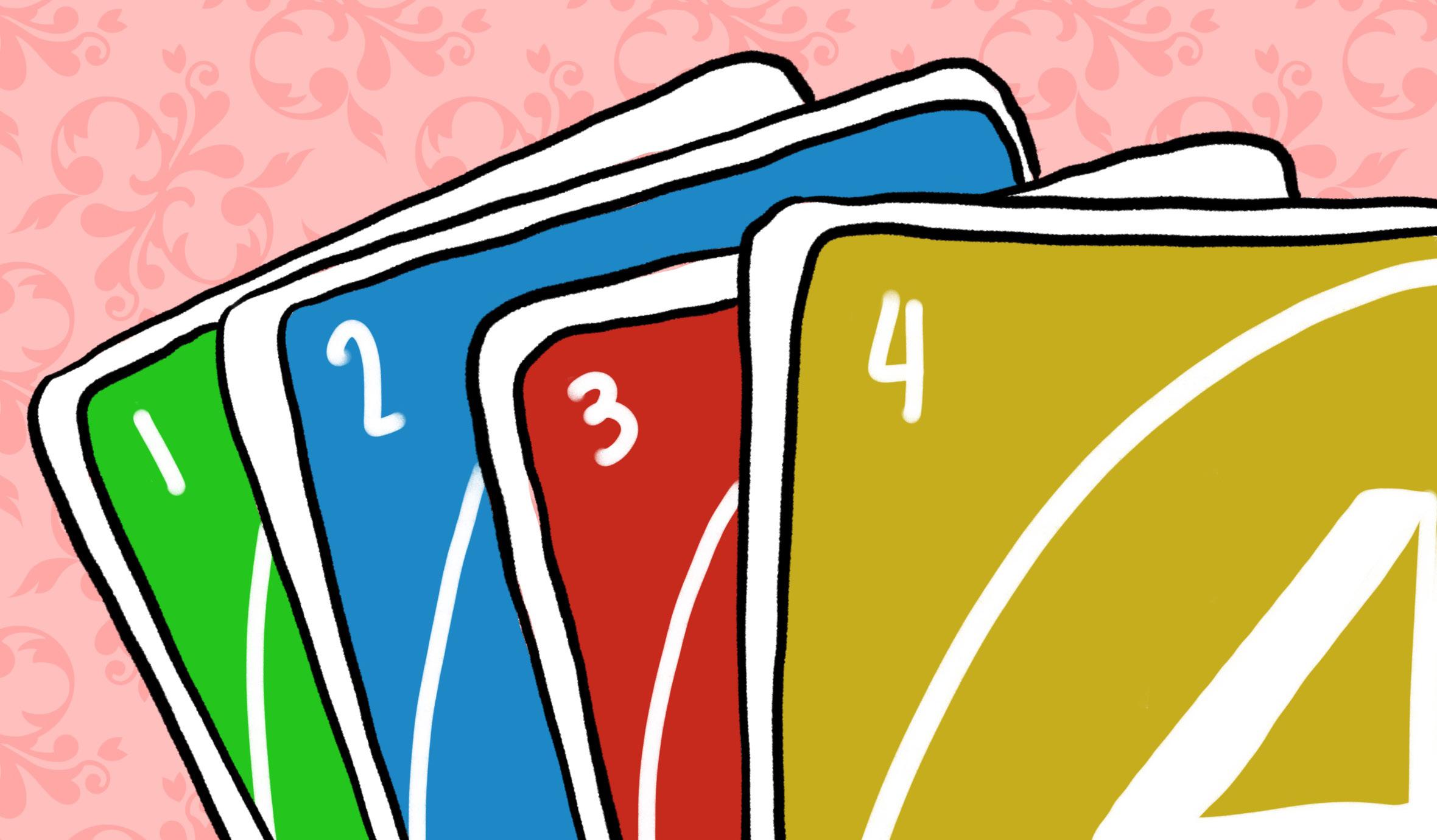

randomly and then a new card is to be flipped up.
Once the first card is played, the game is then played clockwise with each player discarding their cards until they have none left.
According to unorules.com, when playing the Draw Two
matching cards in your hand. If you try anyway you can be challenged by another player, and if you did have a match you must pick up four cards; if the challenger is wrong, they pick up six cards.
Also, you can only put down
have created over the years. According to WikiHow’s article under Your Complete Guide to Spicy Uno written by Jennifer Mueller on Oct 25, 2022, this version of the game involves new rules, such as “slap on six.” If someone plays a six, everyone must slap the pile as
fast as they can and the loser has to pick up two cards. Or they have “trading zero.” If someone plays a zero, they have a choice to trade hands with another player.
I am sure these are only some rules people have added to Uno over the years. Over the years I have been playing, I have had to pick up ten cards because of so many plus two cards being stacked before my turn. Or I have had to skip my turn until another seven is played. The opportunities and choices for new rules seem endless, depending on who you are playing with.
Lastly, let’s chat about all the different versions of Uno! According to Uno under the Mattel website at “Uno Variations,” they state, “There are 651 different types of Uno card games and spinoffs.”
There are tons of Uno variants based on TV shows or movies. But there are also variants that challenge what a game of Uno can be, such as Uno Show ‘Em No Mercy; Uno, All Wild; Uno Bingo; Uno Dare; and many more. There are many ways to play, inlcuding on your phone, so take a break from studying to play a round or two with your friends!
victoria baht staff writer
Want to join an art class, but need somewhere to start? We’ve got you!
victoria baht staff writer
The City of Regina is hosting an art class by Nikki Jacquin. This art class focuses on expressive watercolour techniques. It is currently taking place on Tuesdays, Wednesdays, and Thursdays from 9 a.m.-12 p.m., March 5-14.
The current class that Jacquin is teaching is a class that focuses on different watercolour techniques. According to the All
niques because of how much time she’s spent learning and creating art. She said, “I teach many different mediums. In my 28 years as a visual artist, there have been times when I was losing enthusiasm and inspiration for painting the same old way.”
According to Jacquin, the best way to combat lack of inspiration is “To shake things up. I found switching mediums or working with mixed media helped me inject new excitement into my work. I wanted to pass this idea on to my students. The idea is
the third day of the class, they could choose to develop a new painting or add it to a current painting they are working on.
This is how the current expressive watercolour art class is set up. Although, Jacquin has been doing art and teaching art classes for years, so it’s possible there’s been different ways before.
To learn about Jacquin’s art history, she touched base on remembering doing art for years, ever since she was four-years-old.
She remembers spending time with her dad as a child and
school with a very motivating art teacher. This led her towards taking some fine art classes at Campion College at the University of Regina. However, most of her artwork and passion came from being self-taught and exploring by attending workshops and working with fellow artists.
While working on her art skills over the years, Jacquin has spent lots of time learning and working on different art techniques. Jacquin says she doesn’t have an ultimate favourite type of art technique.
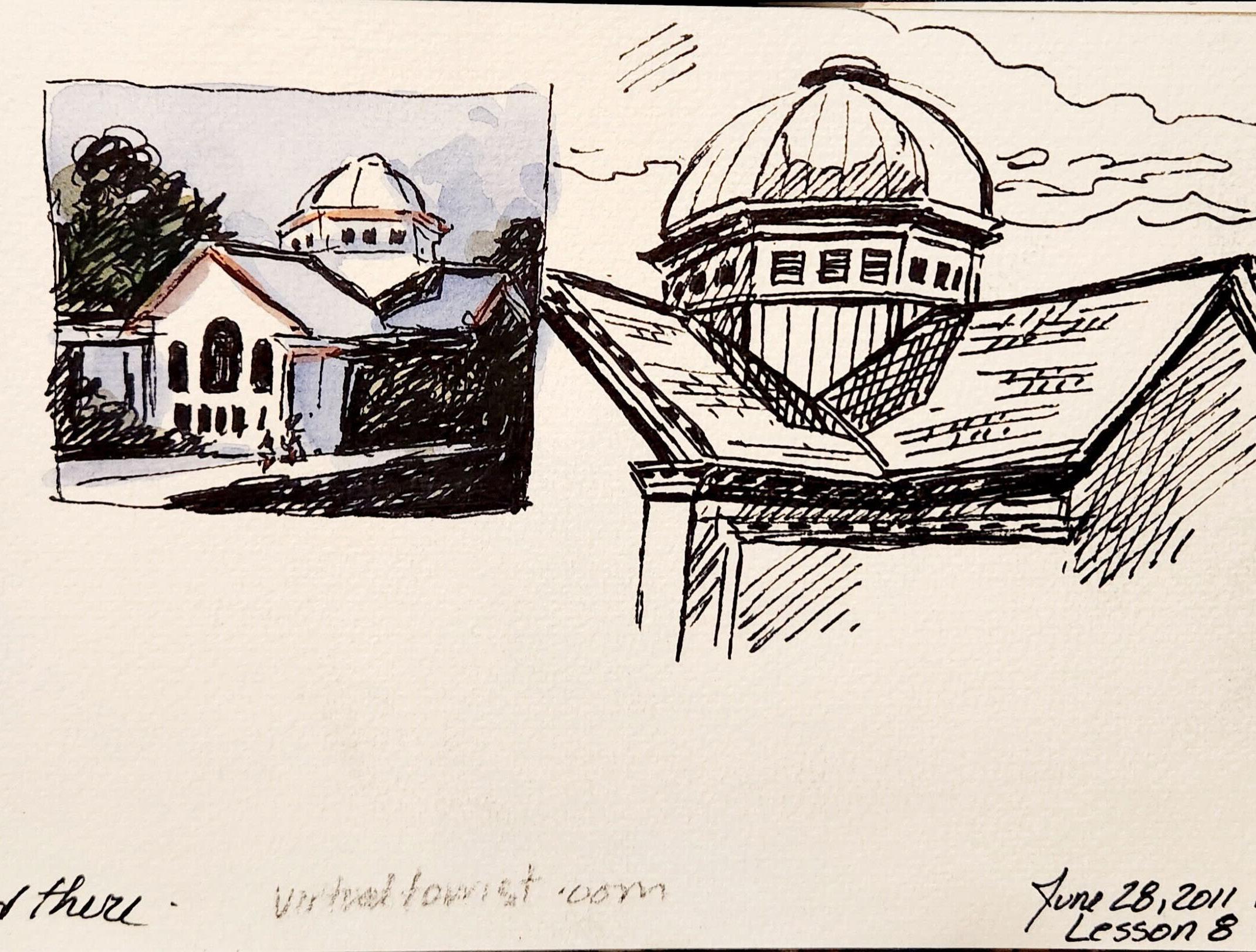
Perspective art is where I have the most trouble, I don’t know about anyone else though.
Events website when searching up Expressive Watercolour Techniques, this class works by teaching you different methods of watercolour.
The website explains this is a time when you review basic watercolour techniques and move towards different techniques and different tools. The website states you can spend time “exploring techniques of sponging, crumpled siran, [sic] salt applications, splashing, wax, resist, imprinting, collage, mixed mediums and more!” It’s recommended that attendees bring a reference picture to help guide their artwork.
Jacquin explained, “This week we worked on a form of bubble art. This is where you blow bubbles, then touch the bubbles with your paint and add the texture to your paper to create bubble shapes.”
Bubble art is the perfect name for this fun-sounding skill. Overall, learning these different watercolour techniques seems cool and challenging.
Jacquin decided to spend time teaching watercolour tech-
that materials and tools outside of the norm for watercolour can be used to help revive their passion for watercolour.”
Jacquin spent time teaching her students new techniques two days this week. Then the attendees were allowed to play around with the technique and see how they felt about them. Then, by
visiting with her dad before he would go off to work. While they were visiting, she would draw a resemblance to the squirrel Skippy on the peanut butter jar. Ever since then, she has been motivated to work on her artwork.
As Jacquin grew older she kept up with her artwork. She went through her years of high
“I like them all, but recently I have been growing an appreciation for modern movements of art and the contextual aspects of how they add deeper meaning to what the artist is doing. In the way of methods and materials they are using. It echoes a meaning in the work that they are trying to communicate.”
Recently, Jacquin has moved towards teaching classes through the City of Regina. In the past, Jacquin taught all different styles of class. She mentioned one specific one she taught that sounded very interesting to me called a “Café Sketchbook Tour.”
In the past, Jacquin spent time teaching an art class at different coffee houses in and around the city. While you were at the café, you would learn a new technique for your sketchbook and spend time enjoying a coffee, eating food, and enjoying each other’s company. Jacquin has taught this class in the past and is looking forward to bringing it back soon! This specific class idea really spoke to me as a university student. I don’t know about other university students, but sitting in a café, enjoying a drink and food, and working on studies is one of my favourite things to do on an outing. Now that I know I can spend time learning and doing art in the same places, I am instantly intrigued!
If this is a class you would be interested in taking, Jacquin will be offering it in May through the Neil Balkwill Civic Arts Centre and the City of Regina. You can find more information about this upcoming class through regina.ca or by calling 306-777-PLAY. You can also find more of Jacquin’s artwork and different tours, classes, and history of her artwork at www.nikkisporitraits.com.
If you are interested in signing up for an art class or working on a different art medium, Jacquin wants to remind all the different artists to be relaxed and go with what the art does.
When you are working with different artworks, textures, or mediums, it’s important to be spontaneous and work with the art and not against it. You can create a beautiful painting. Be kind to yourself and keep an open mind. Art is different for everyone, and every piece can be different as well!
“ The idea is that materials and tools outside of the norm for watercolour can be used to help revive their passion for watercolour.”
Nikki Jacquin
allister white news editor
When everything isn’t fine: am I being harassed?
The Criminal Code of Canada defines harassment under section 264.2 as behaviour that includes repeatedly following, communicating with, threatening, and watching the other person at their home and/or workplace. The Code says that harassment “causes that other person reasonably, in all the circumstances, to fear for their safety or the safety of anyone known to them.” As the Canadian Resource Centre for Victims of Crime (CRCVC) explains, this behaviour is “not a sign of love; it is about power and abuse.”
The CRCVC is right; harassment is not about love but power, and its abuse. There is a strong link between criminal harassment and domestic violence. According to the CRVC, 57 per cent of stalkers are intimate or ex-intimate partners of victims. Most victims know their stalkers.
Criminal harassment has the potential to escalate into violence. The American non-profit anti-sexual assault organization Rape, Abuse & Incest National Network (RAINN) says that women on college campuses are twice as likely to be sexually assaulted than robbed. This potential for escalation is, in part, what makes harassment so terrifying.
Some folks on university campuses do not understand healthy boundaries, do not respect “no” as no, and do not expect any consequences for their actions. They walk among us, only they are not aliens, and you and I are not Dana Scully and Fox Mulder about to uncover some blood-curdling truths from a basement office.
So, are you being harassed? If you have made it clear to someone that you do not want to speak with them and they continue to follow you, communicate with you or anyone known to you, or watch over your dwelling – you are being harassed.
Glittery diaries, locks, and explicit details: your guide to good record-keeping.
Not-so-fun fact: a study on the sexual victimization of college women conducted by Bonnie S. Fisher, Francis T. Cullen, and Michael G. Turner in 2000 revealed that “fewer than 5 per cent of completed and attempted rapes were reported to law enforcement officials. In about two-thirds of the rape incidents, however, the victim did tell another person about the incidents. Most often this person was a friend, not a family member or college official.”
Harassment may be a precursor to violent assaults, so it is important to file a report to have an official record of what has happened and get a safe intervention before it can escalate. If you have determined that you may be the victim of harassment, make a physical record of it.
If you find yourself questioning whether or not a situation or experience that seemed off is part of the problem, the possibility is there so make sure to write it down. Good record-keeping is important because while John Doe at the front desk is probably not going to tell you that everything is fine and no action can be taken, crazier things have happened (I mean, have you seen the X-Files?). It is much harder for John Doe to tell you nothing’s wrong if you have a record of all the things that are wrong.
This is not to say you have to lug around a little glittery diary with one of those tiny locks to hold all the explicit details. All you need is a document to keep logs of instances you’d like to report. I included sections for dates, times, the description of the incident, witness names, and evidence. I also reused the template over and over again to record every instance. Stalkingawareness. org has a free stalking incident and behaviour log.
See something, say something: what to do when it’s time to talk.
While Campus Security is not the be-all-end-all, it is a good place to start when you’d like to file a formal report. A report can be in person at the Campus Security office in the Research and Innovation Centre or over the phone at 306-585-4999.
Campus Security also of-
likely be put into contact with the University of Regina’s (U of R) Respectful University Services for support in resolving the issue.
Advocating for yourself and your issue is important and a good first step, but make sure to bring a friend or trusted person to help with the process. An
will likely already be in your papers, so you will not have to memorize dates or times.

fers the option to report online, with the added option to remain anonymous. The online reporting portal allows you to forward your report directly to Campus Security; Health, Safety, Wellness; the University Sexual Assault Coordinator; or Respectful University Services.
If you are dealing with harassment on campus, you will
added benefit of reporting is that Campus Security and Respectful University Services will have documentation of the incidents.
Campus Security is open 24/7, so you can report at any time. If you are reporting in-person, printing off your statement and records could help reduce the stress and pressure. The answers to Campus Security’s questions
“If you have made it clear to someone that you do not want to speak with them and they continue to follow you, communicate with you or anyone known to you, or watch over your dwelling—you are being harassed.”
Allister White
When you think that something’s wrong, don’t be discouraged – trust your gut feeling. As I said before, John Doe at the front desk is probably not going to tell you that everything’s fine and no action can be taken – but crazier things have happened (am I allowed to tell you to go watch the X-files again?).
Speaking of record-keeping, when you talk to John Doe at Campus Security, make sure to record that, too. Include the date, time, and an audio file of the conversation. Keep it all.
When the dust settles.
For me, the process from start to finish took almost a month. I chose not to file a police report, but this is almost always an option. The most important thing to keep in mind throughout the whole process, though, is to keep yourself and your well-being as the top priority.
In addition to the U of R’s Student Wellness Centre, students can contact the CRCVC for emotional support or a referral to a counsellor. Remember, you are never alone.
kimberley kaufman s&h editor
Many streaming services have made the debate of whether sports fans think it is better to watch a sports game in person or online. In the past, the only options were through cable TV and attending in-person.
Each option has pros and cons. According to a worldwide study conducted in 2021 by live video production firm Grabyo, 79 per cent of sports fans would only watch live events on streaming services if they could.
The report states: “Video consumption has increased exponentially in the last year. Consumers have had more time at home, and as a result they have branched out to other sports, leagues and types of content than they would usually watch.” The report noted the COVID-19 pandemic as a factor in the rapid change to viewing sports games remotely.
ESPN also explored this topic back in 2009 on “Page 2’s Great Debates.” Jim Caple and Patrick Hruby offered opposing arguments as to which was better and
why. Caple argued that certain sports are better seen in person while others are better appreciated on the big screens.
“The person lying on his couch watching golf or cycling on TV has an exponentially better idea of what’s going on with the overall event than the schlub following one group of golfers or standing at some lonely stretch of road waiting for that exciting 15 seconds when the cyclists pass him,” Caple wrote. “That said, being at an event is almost always a more satisfying experience than seeing it on TV.”
Hruby countered that the typical game-going experience offers downsides to in-person sports-watching. Hruby commented that watching games in person takes a list of unpleasant experiences like traffic, the parking at the game, “school-lunch-quality cheeseburgers, [and] enduring an audio-visual Normandy landing from the stadium P.A. and Jumbotron, all game long.”
Watching the game in-person then offers a unique experience of being “in the moment” that cannot be replicated by recordings or watching from home.
In today’s context, why are people increasingly shifting to streaming their favourite sports instead?
Attending in-person games takes time, money, and a tolerance for unpredictable weather. For many people, attending a large, televised event to get that in-the-moment experience is not worth taking a day off from work spending the money for a seat, or sitting through any undesirable weather conditions.
Still, watching in-person is not without its appeal. A blogger for That’s All Sport suggested that live sporting events offer a more full experience of the game through pre-game rituals and half-time entertainment, as well as an opportunity to support local teams. “Going to live games can also be a way to support local teams, both financially and emotionally. The revenue from ticket sales often contributes significantly to a team’s budget, and the moral support from fans can boost a team’s performance,” wrote the blogger, Josh.
Viewing the game remotely, however, offers its own benefits. A commuting worker might turn on the radio to catch up on the com-


mentary or hear the final scores, and those away from their homes can access the game over their phones.
Streaming services like DAZN, Fubo, Sportsnet NOW, and TSN+ offer live HD sports, and “Rider Radio” 620 CKRM is free to listen to. However, each platform has partnerships with
“universal”
In 2019, the Canadian government released A Prescription for Canada: Achieving Pharmacare for All, the final report from the advisory council on plans to implement national coverage for prescription drugs.
“If the promise of universal health care is that Canadians are there for each other when we’re sick, by not including prescription
certain leagues and regions, so check their coverage before signing on with any subscriptions. Keep in mind that external factors and recent trends may push you towards one option or the other, but considering them all can help you get the best access to your sports.
project: better access to the medicines we need, improved health outcomes and a fairer and more sustainable prescription medicine system.”
According to the 2019 report, Canadians spent approximately $34 billion on prescription medicines in 2018. According to a 2021 study published in the Journal of Pharmaceutical Pol-


drugs we’re placing a limit on that commitment,” wrote the chair of the advisory council, Dr. Eric Hoskins, in the report.
Hoskins continued, “The time for universal, single-payer, public pharmacare has come. This is our generation’s national
icy and Practice titled “Trends in Canadian prescription drug purchasing: 2000-2020,” prescription drug spending was estimated to increase from 4.2 per cent to 4.6 per cent per year from 2021 to 2023, representing a total spending of approximately $37.2
billion in 2023.
Drugs are the second largest expenditure in health care after hospitals, and the Canadian healthcare systems spends more on pharmaceuticals than they do on doctors. At the time of the 2019 report, approximately 3 million Canadians could not fill their prescriptions due to unaffordability.
As it stands, Canada is the only country in the world that has universal health care but does not include universal coverage for prescription drugs. Instead, Canada relies on more than 100 government-run insurance programs and over 100,000 private drug insurance plans.
On Feb 29, 2024, Minister of Health Mark Holland introduced Bill C-64, An Act respecting pharmacare, which proposes the underpinning principles of the first phase of a national universal pharmacare plan.
“Each and every Canadian should have access to the prescription drugs they need. That’s why we’re working with our partners towards the first phase of national universal pharmacare. This important next step will provide universal access to contraception and diabetes medication that will be transformational in improving health outcomes in Canada,” said Holland.
Covering contraception will increase the access of nine million Canadians of reproductive age and is expected to promote reproductive autonomy. This is of major significance, as cost has largely been identified as the single most impactful barrier in ac-
cessing these medications. Moreover, the cost of such medications is unevenly felt by women and gender-diverse Canadians.
Conversations around universal contraception in Canada have intensified in recent years, most notably following U.S. legislation impacting abortion rights. Such conversations in Canada have highlighted major gaps in healthcare policy that must be addressed.
Those who live in rural or remote communities, who belong to Indigenous communities, or are newcomers to Canada may have increased barriers in accessing contraception warns Dr. Vivian Tam, an emergency physician based in Ottawa. “What we really want to do is to protect and prioritize the reproductive freedom and health of people with a uterus,” said Tam.
She continued: “The first thing that we need to do as a country, collectively, is to reject the idea that just because you’re poor or living in a rural part of the country or Indigenous, that you need to accept a lower standard of health care and wellbeing.”
According to a CTV News article, “One U.S. study found that a publicly funded contraceptive plan resulted in major cost savings, with every dollar spent on IUDs resulting in seven dollars saved in other health-care costs. Tam noted that in countries like the U.K. and Australia where contraception is covered, there are clear downstream cost savings with respect to averted unwanted pregnancies, constituting STIs and infertility.”
Following the announcement of the national Pharmacare plan, the Alberta government announced it wants to opt out of the plan covering diabetes medication and contraception. Alberta Health Minister Adriana LaGrange shared how the province is unhappy with the way the deal was reached without consulting with the provinces first.
LaGrange claimed that Alberta already has “robust” coverage of medications and would rather Ottawa give Alberta per-capita funding to strengthen its own programming instead of forcing the province to sign into the national program.
Alberta’s unwillingness to adopt the Pharmacare Act raises concerns around whether other provinces will follow suit. In Saskatchewan, an email statement was released that claimed the government needs more information about the program. “Our residents are currently being provided protection from high drug costs through several provincially operated programs. At this time, the cost to the province for a national pharmacare program being implemented in Saskatchewan is unknown,” the statement said.
However, the Saskatchewan provincial government also said the province is “not interested in reducing the scope of its existing drug plan to align with a new national plan if the new plan will result in reduced benefits.”
What are the goals of the new federal action plan, and where are we now?
ulations, and the need for collaborative and multisectoral action.”
munities and partially in 72 communities in Saskatchewan.
Attempting to reduce sexually transmitted and blood-borne infections (STBBIs) in Canada to adhere to the World Health Organization’s (WHO) global targets, the “Government of Canada’s sexually transmitted and blood-borne infections (STBBI) action plan 2024-2030” was published in February 2024.
WHO’s targets include eliminating epidemic levels of AIDS and viral hepatitis, along with reducing overall health impacts for individuals with STBBIs. The action plan defines infections targeted through this initiative: “chlamydia, gonorrhea, syphilis, human immunodeficiency virus (HIV), human papillomavirus virus (HPV), herpes simplex virus (HSV 1 and HSV 2), hepatitis B (HBV), and hepatitis C (HCV).”
It also cites a continuous and troubling rising trend in STBBIs globally – noting that Canada is no exception – and appears to outline measurable progress methods as well as Federal Progress Indicators to measure actual outcomes of this effort. Much like my earlier article “We should treat COVID more like an STI” published in January 2023, this action plan notes that our collective COVID experience will be useful in approaching sexual health going forward.
“This is a critical point in time where Canada’s response to STBBI can be informed by lessons learned from the COVID-19 pandemic.” is stated in the Ministerial Forward. “COVID-19 taught us the importance of clear and effective public health messaging, research, innovation, tailored interventions for key pop-
The present action plan follows the “Accelerating our response: Government of Canada five-year action plan on sexually transmitted and blood-borne infections” published July 9, 2018, which also boasts the goal of reducing STBBIs by 2030. An easier-said-than-done vision is outlined in the document: “A Canada where STBBI are rare and people living with STBBI receive the care and support they need.”
The “2020-2022 Progress Report on Sexually Transmitted and Blood-Borne Infections (STBBI)” was published by the Government of Canada on May 25, 2023, outlining the measurable impacts of their five-year Framework for Action in preparation for the report published last month.
The progress report notes seven federal priorities: “moving toward truth and reconciliation with First Nations, Inuit, and Métis Peoples,” “stigma and discrimination,” “community innovation – putting a priority on prevention,” “reaching the undiagnosed – increasing access to STBBI testing,” “providing prevention, treatment and care to populations that receive health services or coverage of healthcare benefits from the federal government,” “leveraging existing knowledge and targeting future research,” and “measuring impact – monitoring and reporting on trends and results.”
Resources of note in this document include the Know Your Status (KYS) Program, an initiative based in the Saskatoon Tribal Council which advocates and aids in providing STI testing. As of the 2020-2022 Progress Report, KYS was fully functioning in 42 com-
The document also addresses the movement from the Canadian Guidelines on Sexually Transmitted Infections (CGSTI) to “Sexually transmitted and blood-borne infections: Guides for health professionals” which addresses individual STBBIs in detail. Information on screenings, diagnoses, and treatment are publicly available here, covering infections like HIV, chlamydia, genital herpes, anogenital warts, and much more.
One encouraging aspect of the progress report includes
acknowledgement that unsafe drug use practices such as needle sharing contribute greatly to the spread of STBBIs. While this makes it all the more troubling that Saskatchewan – a province with some of the highest STBBI rates in the country – is restricting their support of needle exchange programs, the progress report encourages “supervised consumption sites,” needle exchanges, and overdose prevention services.
New technologies in the progress report include the November 2020 approval of the INSTI test, a self-administered
increased by 599 [per cent] between 2018 and 2022.”
Page 12 of the action plan describes identified “social determinants of health and their impact on STBBI,” placing a focus on anti-Black and anti-Indigenous racism and acknowledging that “STBBI do not affect all people equally.” These inequalities are systemically perpetuated through unequal access to education, marginalization, and lived experience with incarceration among other factors.

“ ...multidrug resistance is rapidly increasing for gonorrhea, with resistance being reported against both first- and last-line antibiotics resulting in challenges to treatment including treatment failure.”
Government of Canada’s sexually transmitted and blood-borne infections (STBBI) action plan 2024-2030

HIV test, and research progress in home-tests for syphilis as well. More information can be found at catie.ca, the website for the Community AIDS Treatment Information Exchange.
Tracing back to the action plan released this month, it claims on page nine to be working toward the goals WHO has set out globally for reduction and treatment of STBBIs. Regarding HIV they desire no new infections, no deaths related to AIDS, and no discrimination based on the diagnosis. Regarding STIs more generally, WHO wants to see syphilis and gonorrhea reduced by 90 per cent globally, as well as the administration of the human papillomavirus (HPV) vaccine to 80-90 per cent of any given population.
A shift in trends worth noting from the action plan is that STBBI diagnosis incidence – the rate at which diagnoses are made – among men who have sexual partners that are men has remained fairly consistent, while diagnosis incidence has increased in women and heterosexual couples more generally. “Infectious syphilis rates increased by 109 [per cent] between 2018 and 2022, and the rate of congenital syphilis
Antimicrobial resistance (AMR) – bacteria developing to defeat treatment – is another concern raised. It is “increasing globally due to the overuse and misuse of antimicrobials, the global movement of people, and socio-economic and health system inequities around the world. Specifically, multidrug resistance is rapidly increasing for gonorrhea, with resistance being reported against both first- and last-line antibiotics resulting in challenges to treatment including treatment failure. Antibiotic resistance increases the individual and health system burden of gonorrhea by prolonging infections and increasing the number of people with long-term complications of gonococcal infections.”
Thankfully there is an increase in research toward preventative treatments to complement the reactive treatments that can be taken post-infection and post-diagnosis, with HIV Pre-exposure Prophylaxis (PrEP) being a notable recent highlight that can protect individuals without HIV from potential exposure. Other preventative treatments in the works include a vaccine for gonorrhea, and antibiotics for bacterial STIs.
Holding conflicting thoughts is a life skill
holly funk editor-in-chief
Seeing both sides of the same coin can take quite a mental toll some days. But, if you’re not making an effort to do that, you’ll only have partial understandings when you should be considering full pictures.
One example of this is knowing that we’re all responsible to work to better the world, but also holding the fact that we have to work within the systems available in the world if we’re going to do that.
Inventors working toward electricity had to work toward that by daylight, candlelight, or maybe the roar of a fire. Labour activists fighting for better worker treatment may still have to earn a living through organizations with questionable practices (thanks, capitalism). University students who’d like to see a freeze on post-secondary tuition rates still pay those rates to attend the institution they want to better. You can still work toward good while acknowledging the limits.
This comes into play with communication expectations as well. On one hand, you don’t owe anybody an instant response to text messages. If they feel anxious or experience some rejection sensitivity dysphoria, those are their emotions to learn to manage in healthy ways.
At the same time, you have to put effort into the relationships you want to maintain. If communication is a need for somebody and you’re not willing or able to fulfill that need, you will have no right to get upset if they choose to cope with that in a healthy way and prioritize other people in their life who do meet that need.
I can also see this playing out in the ways adults treat children. I strongly believe that the only people who should have children are the people who really want to be a parent, and that many people would’ve been much happier in life if they didn’t give into the peer pressure to reproduce. Some people don’t want to orchestrate their adult life around a traditional family dynamic and that’s absolutely fine. Some people straight up just don’t like children and don’t want to have to raise any, which is also fine.
However, that doesn’t mean you get to be an asshole to kids. There is no problem with not wanting a flock of your own, but you must still treat kids with care and respect. They’re just people, after all. People born later than you were, but people all the same. If it pisses you off when people older than you treat you poorly for something out of your control like when you were born, you’d better not be treating kids poorly for something also out of their control.
Along these lines is something I’ve become intimately familiar with through studying religion. If you want to find some of the greatest acts of kindness, some of
the most serious and consistent efforts to better the human experience, you should look at religion. If you want to find some of the most disgusting acts of dehumanization, violence, and control, you should also look at religion. To put things simply, religion is a tool, and it can be used to do good work or it can be used to cause unimaginable harm.
weeks to recover from the sorts of harms experienced in these situations. But, it helped me concretely lay out the foundation for the sort of person I want to be from here on out, and that’s priceless. I do not take responsibility for the ways another person decided to treat me, but I had to take responsibility for the healing I require after being subjected to that sort of treat-
must be lesser-than. If you wind up feeling worse off because you see yourself as not measuring up, obviously you’re harming yourself that way too.
On the other, much more complicated hand, trauma responses are comparisons. And I’m not saying that to invalidate trauma responses at all – sometimes your nervous system is going to legitimately realize


This also becomes deeply important when looking at the ways that you yourself have been harmed throughout life. On one hand the hurts, betrayals, and traumas you carry are not your fault – no victim blaming here, you were subjected unfairly to those things. On the other hand, the healing for what you’ve gone through is your responsibility.
To illustrate this a bit more concretely I’ll use a personal example. I just finished going through a nine-week group counseling program called Insight which is run by Family Services Regina for people who’ve survived domestic violence and are wanting to heal.
The program itself didn’t “cure” me or anything, it takes a lot longer than nine
ment.
This last example I’m going to cover hit me like an absolute freight train when the two sides of this coin came together. You know how sometimes you can intentionally think through things and come to a conclusion, and other times the conclusion moreso comes to you? This one was the latter.
On one hand, comparison is a thief of joy. Comparing your accomplishments, your work, your appearance, your status, or your dreams to those of others will practically always cause harm. If you wind up feeling better than them then you only feel better because you’re being condescending. You’ve decided your ways are best and if others aren’t doing things your way, they
“You can still work toward good while acknowledging the limits.”
Funk
you’re in a situation you’ve experienced before, and it will make alarm bells scream to try to prevent the same hurt you were subjected to previously. Ultimately it’s trying to protect you based on patterns that have led to harm in the past, and sometimes those alarm bells are absolutely correct.
Other times, however, they’re not. Sometimes what you’re currently experiencing isn’t what your nervous system is desperately trying to avoid, and you wind up missing out on experiences or distancing yourself from a person who could have brought good into your life.
The best way I’ve found to work with these two realities is to do what you can to judge people based on their own actions. Yes, your body is still going to respond based on what’s similar to what you’ve experienced and you should take that seriously, but you also need to take it with a serious grain of salt and weigh more heavily how the experience or person is in and of itself/ themself.
Be willing to flip the coin. Be willing to legitimately consider multiple perspectives, to hold perspectives that may appear at first glance to conflict, and find the coin’s edge that relates them.
Our streets need to be safe for all of us; tolerating harassment does nobody favours
allister white news editor
Most have heard of urban warfare and the devastation that this particular style of war commonly has, especially on innocent civilians. What many do not understand is that women and queer people are often forced to fight their own form of urban war in cities, gripped by an often-ignored and perceivably endless urban war – the war on street harassment.
We walk streets that have been turned against us, forced to navigate the complexity of the terrain our harassers create. We fight for control over our cities and our alleys. We do not have the luxury of distinguishing combatants from allies, or others simply trying to defend their homes.
CBC says there is “no right way to
al urban war may seem arbitrary, the fact of the matter is that verbal street harassment constantly threatens to escalate into more extreme violence. Of the thousands of women who responded to the nonprofit group Stop Street Harassment’s survey, over two-thirds stated that they were concerned the harassment would escalate in aggression. Canadian sexual assault and rape statistics prove that these concerns are not unfounded.
About 30 per cent of Canadian women over the age of 15 report having been sexually assaulted outside of an intimate relationship. When we read “30 [per cent] of Canadian women,” we oftentimes do not understand that 30 per cent here is the same as 4.7 million.
We see the numbers. We read them. We understand the elementary math that explains 4.7 million looks like 4,700,000
just as kind and full of spirit as the people we know and call our friends, family members, and partners.
Ruth George who was raped and murdered in a parking garage by Donald Thurman. Firsthand accounts in this case are those that her murderer made – that he did not know Ruth George at all – and that he killed and raped her because he was angry that she ignored his catcall. Thurman was previously paroled on armed robbery charges. The fact that the justice system enabled him to commit further crimes is just as unfathomable as the statistics are.
Michael Riordon interviewed many victims of street harassment for a contribution to The Body Politic titled “The Mirror of Violence.” Firsthand accounts made by “PD,” a gay man who was a frequent victim of street harassment that at one point came from five Toronto teens who joked
reality is that, often, our parents are victims of the same systems that we are, systems that have taught us that harassment on the streets is normal and acceptable.
I think we can move past this normalization by thinking about what victory in this case really means. Victory is holding hands on the street without cruel taunts or threats of violence. Victory is walking the city’s streets without having to navigate artificial obstacles or zig-zag from one side of the street to another in fear.
Victory is having to worry about the people we love a little less.
We also must remind ourselves that victory is achievable. Kearl’s study found that 91 per cent of respondents believed street harassment could be ended. We can achieve victory with laws such as France’s “Safe Streets, Workplaces, and Public Spaces Act of 2017,” which has since been


deal with street harassment,” which means that even if we think we know how to protect ourselves, we risk our livelihoods and the livelihoods of those around us by being wrong in how we ‘deal’ with it. What the CBC report on street harassment also means is that we cannot honestly know how to protect our friends, partners, or family members, especially when the harassment commonly involves them as well. Man or woman, straight or gay, street harassment affects us all, and it must be combated by us all to end the wars that our friends, spouses, family members, neighbours, and coworkers are affected by.
While the comparison of struggles that vulnerable individuals face on the streets to the realities of civilian life during a liter-
and that there is a four, seven, and five zeros; however, our brains are incapable of fully understanding this number. To put it into perspective, the number of women over 15 in Canada who have been sexually assaulted outside of an intimate relationship is roughly 60 times the number of people we will meet and interact with in the entirety of our lives.
Those numbers glare at us from the page as if to say, “look at me.” As if to scream, “LOOK AT ME,” like the people who spend their spare hours screaming slurs, insults, and making unwanted advances at people in the streets.
And it’s not just statistics that scream at us from the page, filling us with rage. It’s firsthand accounts too. Accounts of people
about “smashing the fruits” while he was walking with another man in a local park.
The teens, arrested weeks later, had violently attacked another group of gay men nearly immediately after leaving PD. More accounts of injustice include the fact that the attackers were paroled before their victims were even out of the hospital. The attackers’ reputations and criminal records were all kept scot-free because of the judge’s opinion that they were “of good families.”
Holly Kearl, co-author of a 2011 study on street harassment, says part of the problem is adults who do not educate their children about the injustice of street harassment and thus contribute to a perpetuation of normalization and inaction. The
passed into law. We can achieve victory with honesty and transparency about our experiences – not for pity – but to foster the understanding that street harassment is a reality and not just a statistic.
We can also achieve victory with widespread social change using avenues such as education, taking action as bystanders, and by advocating for change in our justice system to better protect those who are vulnerable.
With clearly defined consequences for street harassment, supporting victims and condemning attackers, an improved justice system, and widespread community action, we will reclaim freedoms lost due to the rise of modern-day tolerance for harassment.
“Victory is having to worry about the people we love a little less.” Allister

by Tom Abramovic
The state of things is quite a sight, the chaos never ends. Still peace it seems is not achieved, while might does not amend.

So all is bleak and darkness reigns, the ashes cloud the sky. Gaza holds fast amidst the flames, and all that’s asked is why?
Events they ebb and tides they flow, yet things remain the same. From Vietnam to Washington, but who is there to blame?
Civilians burn across the globe, eternal conflicts rage. Within the throws, a man aflame a protest for the age.
A death upon familiar soil. A turning of the time? Immolation of a nation. Chanting: FREE PALESTINE!